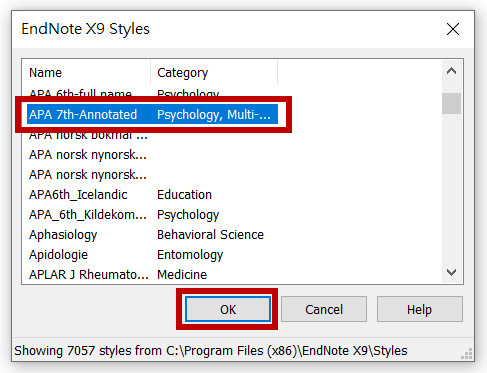
 Download the style file (link below) and save it into this Styles folder. If there is not a Connections folder in it, create it:.
Download the style file (link below) and save it into this Styles folder. If there is not a Connections folder in it, create it:. 
This will give the name and location of your Endnote folder.
References > Preferences > Folder Locations > Style Folder. (Probably at C:\Program Files\Endnote or Documents\Endnote\Styles) Check in Endnote where your Endnote styles folder sits. Endnote will now look in this folder for the correct style. Download the connection file (link below) and save it into this Stylesfolder. Create another folder called Styles inside it. In Windows Explorer (or My Computer) create a folder called Endnote under Libraries/Documents (your personal space on the USC network). Get these styles operational using these instructions These include the version of Harvard style used at USC, and a version of Vancouver using superscripted numbers which is also preferred by most USC students and lecturers. When using a numbered style, enter the p and page number in parentheses (example: (p538)) in the suffix box.Įditing in-text citations can be used for a variety of specific needs beyond direct quotes, such as differentiating between two references from the same citation, adding notes in the text, footnotes, tables, and more.Some styles do not come with the Endnote installation In order to edit an in-text citation in Word, right-click on the in-text citation you wish to edit, select Edit Citation(s). Alternatively, you can highlight the in-text citation and then click Edit & Manage Citation(s) from the Endnote tab. The dialog box will appear. When using APA 6th, simply enter the page number (example: 538) in the page box and click OK.  When using a numbered style (JAMA, Vancouver, etc), you include the the page number in parentheses in the superscript in-text bibliography number. When using an author/year style such as APA 6th, you must also include the page number inside of the in-text citation along with the author and year. Different citation styles require direct quotes to be cited differently. One such example for when you might need to edit an in-text citation is direct quotes. Note: This editing changes individual in-text citations, not the full citation in the bibliography.
When using a numbered style (JAMA, Vancouver, etc), you include the the page number in parentheses in the superscript in-text bibliography number. When using an author/year style such as APA 6th, you must also include the page number inside of the in-text citation along with the author and year. Different citation styles require direct quotes to be cited differently. One such example for when you might need to edit an in-text citation is direct quotes. Note: This editing changes individual in-text citations, not the full citation in the bibliography. 
Most of the time the standard in-text citation is enough to provide within your document to cite your reference, but there are specific occasions when a more detailed citation is required. There are two types of citations in a Word document, the bibliography at the end of the document with the full citation, and the in-text citation that appears at the point where the reference is directly cited, which is a notation (usually the bibliography number or the author name/year) to identify which full citation in the bibliography it is referring to.








 0 kommentar(er)
0 kommentar(er)
